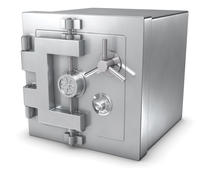
Lead Image © braverabbit, 123RF.com
Using the ATA security features of modern hard disks and SSDs
In the Vault
Article from ADMIN 19/2014
Modern ATA hard drives and SSDs offer security options that help you control access and reliably destroy data if necessary.
The range of ATA security features are well defined, however, you will be hard pressed to find an operating system with a tightly-integrated tool chain that consistently leverages the benefits of ATA.
The hdparm tool, which is included with almost all Linux distributions, at least lets you control the ATA security features by scripting or manual commands. On many laptops, ATA security is integrated into the BIOS. This article describes how you can control access to your disk data through ATA security.
A Little Theory
When you buy an HDD or SSD today, all the security features are initially disabled. A query with hdparm as the root user provides ATA security information (Listing 1).
Listing 1
hdparm Info
# hdparm -I /dev/sdb
/dev/sda:
ATA device, with non-removable media
Model Number: INTEL SSDSC2CW240A3
Serial Number: XXXXXXXXXXXXXXXXXX
Firmware Revision: 400i
Transport: Serial, ATA8-AST, SATA 1.0a, SATA II
[...]
Commands/features:
Enabled Supported:
* SMART feature set
Security Mode feature set
* Power Management feature set
* Write cache
Look-ahead
* Host Protected Area feature set
[...]
Security:
Master password revision code = 65534
supported
not enabled
not locked
not frozen
not expired: security count
supported: enhanced erase
4min for SECURITY ERASE UNIT. 2min for ENHANCED SECURITY ERASE UNIT.
[...]
Listing 1 shows
...Use Express-Checkout link below to read the full article (PDF).





